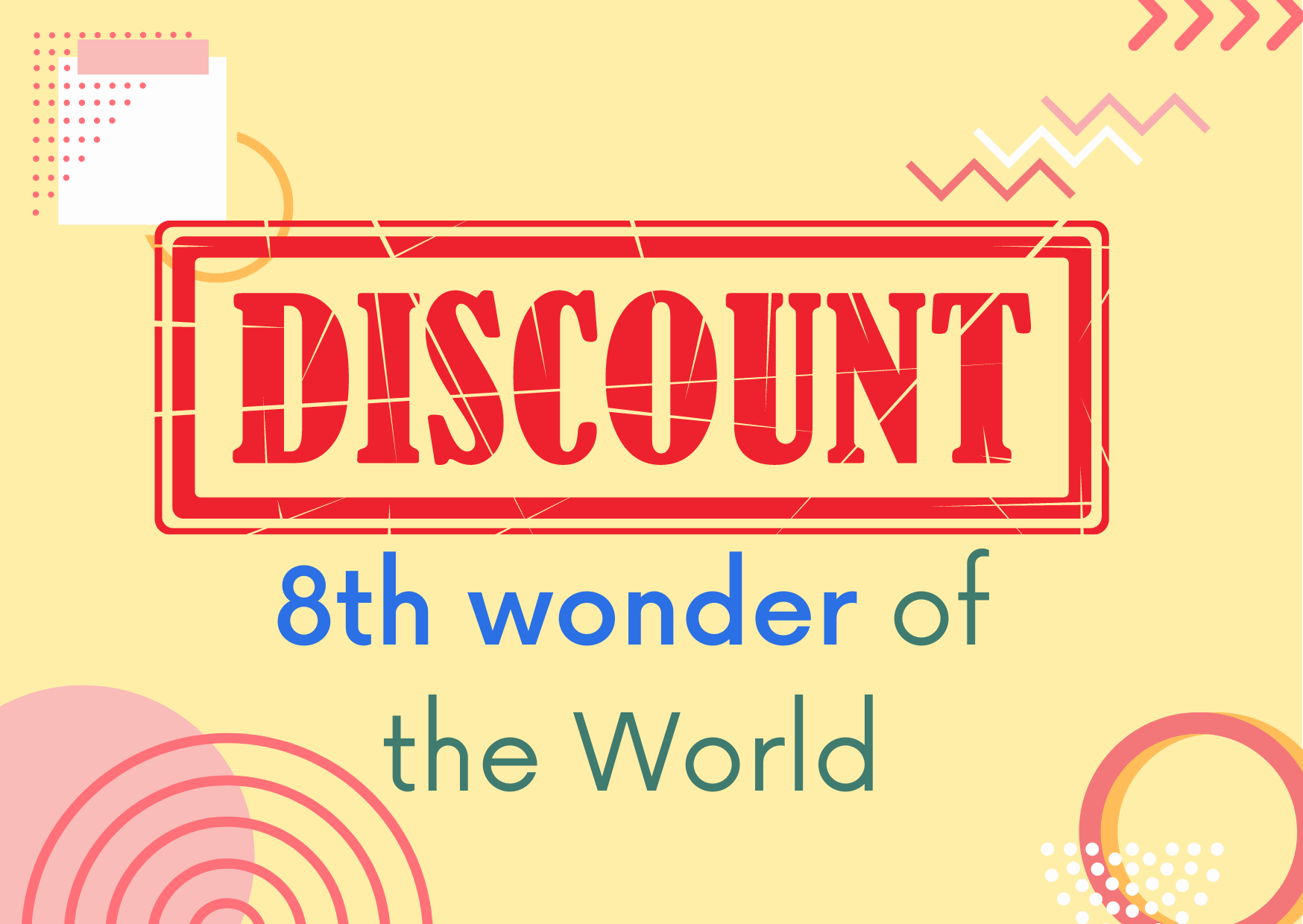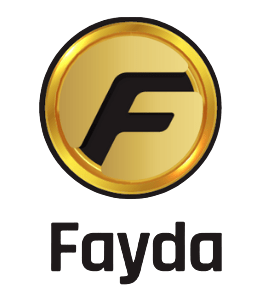Apr

Discount - Effective promotional tool
Discounting - 8th wonder of the World
91% customers tend to revisit the store, when offered a coupon or discount.
Discounting is not so new concept in the business world, they have been used since
a long time as a promotional tool but with time discounting game has completely
changed and it has now become a weapon for businesses to fight the competition.
Essentially after digital revolution i.e. use of discounts by Online Giants and Chain
Stores has resulted in unprecedented importance of discounting for every possible
product. Discount not only makes customers feel good about product but also create
value, emotional bond and loyalty for business in customer’s mind.
What is Discounting ?
It is a promotional tool used for years for acquiring and retaining customers. For
discounting, the product is sold at lower than it’s actual price.
It gives satisfaction of buying the same product at cheaper price, making customer
feel good about scoring a good deal and that the penny saved is penny earned,
ultimately improving their purchase experience.
It also creates certain sense of excitement and urgency to make purchase before the
discount ends, driving more customers, more purchases and customer’s loyalty.
Types of Discount
1. Percentage Sales -
Percentage sale discount is a discounting system in which the discount is based on
the cost and margin available and that is expressed in term of percentage on mrp of
the product, e.g A business may offer 15% discount to its loyal customers or certain
percentage discount when customer buys two or more items.
Effectiveness of these discounts depends on perception of customers , customer’s
value percentage discount more than flat discounts e.g. when they see getting 60%
discount on food delivery they value it more compared to when they see flat Rs.
100/- off on the orders.
This discount is easiest to calculate, as just a calculation of margin between cost
and mrp needs to be calculated and certain percentage is to be decided after
keeping the margins for profit aside. And due to this convenience it is popular in both
B2C and B2B.
2. Buy One , Get One -
Popularly known as BOGO, this discount emphasises on buying two products of
same item or item of equal or lesser value. It encourages sales as who does not like
to get things for free .
This tools works best in retails and e-commerce settings as it is appealing much
though in e-commerce setting , customer still needs to pay shipping charge for both
the products.Major benefits of this discounting is stock clearance and increased
order size per customer. Customer’s also value such discounts as they get two
products at the price of one.
3. Over-Inventory Discount or Stock Clearance Discount
Sometimes business acquires goods more than needed and this results on
dead-stock or shelved inventory. This inventory has got the investment but returns
are no yet monetised and hence resulting in overhead costs and losses and to dilute
this loss, over-inventory discount is used. It refers to selling the access inventory at
lower than actual price. While it may not entirely result in profits but surely dilutes
the loss.
4. Free Shipping
Essentially used in ecommerce setup, this discount is used to encourage customers
to make online purchases using the free shipping as an appeal to purchase. Usually
stores or websites put up a certain amount as basics and over that bill amount
shipping is free, making customers to make minimum purchase of the certain limit
decided.
E.g. - One can offer free shipping only on orders above Rs.500/-, resulting that most
customers will make a minimum purchase of Rs.500/- .
It also adds as a competitive advantage as when a customer finds same products at
two stores, he is obviously going to purchase where he gets no or lower shipping
fee.
5. Cash Discount
It refers to discount given on cash payments or maybe early payment discount
(before the due date of credit). It encourages buyers to make payment immediately
or within a specific period of time. It makes customers make payment without any
miss as they get incentive for making payment within due time.
Example – Discount is offered in this manner, 10% off when immediate cash
payment is done, 5% off is payment is done within a week, 3% off if payment is
made within 15 days and no discount if payment is made after 15 days.
6. Wholesale discount
This kind of discount is usually offered by wholesalers or suppliers when the buyer or
retailer makes the bulk purchase. The basis of calculation of such discounts is
usually the order bracket. For Example – 10% off when order size is 10,000 pcs, 5%
off when the order size is 8000 pcs .
Some chain departmental stores use this tool for direct customers as well, when the
purchase is in bulk or as a part of loyalty or subscription program.
7. Referral Discounts -
It is one of the rapid growing trend in discounting industry, due to rapid growth of
influential marketing.
This tool offers discount to customers each time they refer the product to a new
customer, creating a chain of value for business as well as customer.
In this the influencer or existing customer get their own unique referral code, which if
a new customers uses while buying, both of them or either of them gets the
discount. .
This can be helpful for generating organic traffic as the tool uses Word-of-mouth
marketing backed by a discounting tool, making it one of a kind.
8. Price Bundling -
Initially it was popular only among phone and data service providers as they used to
provide various bundles of services under the same head at a discounted price .
Though with time it has now become popular in every sector of market , encouraging
buyers to make purchase of related goods or more of same goods for discounted
price, resulting in increased order size .
Ex- Departmental stores offering, One box of cereal @Rs.70/-, while bundle of Two
boxes of the same product @Rs.120/-, costing Rs.60/- per box to the customer .
Or selling a bundle of mobile phone and its accessories at a discounted price.
9. Seasonal Discounts -
Popularly known as End of season sale, i.e. offering discount on products which are
running slow due to season or time period. It encourages customers to buy products
in advance for the upcoming season or year . For example - Offering Sweaters,
Jackets and winter wear at discounts in summers or selling raincoats in winters at
discounted price .
It help business to clear its remaining inventory of last season and customers to get
products in advance at cheaper prices.
10. Trade – in Discounts
It refers to selling goods at lower price when the buyer gets older product exchanged
while buying the new product . Earlier it was only popular in durable items such as
kitchen utensils but with time it has now made its place in various sectors as some
cloth brands have started giving certain percentage off when buyer drops off his
used clothes at the store while buying new clothes.
For example – A business offers Rs. 500/- off when the buyer trades-in or exchanges
his older mixer while buying a new one .
It not only provides value to buyer and seller but also to society as it promotes
recycling and upcycling aiding ecological and environmental needs.
11. Email or Funnel Discounting -
This refers to providing discounts when a customer reaches business through an
email or certain part of funnel, it drives customers to business as they become leads
and potentials for business by reading email or DM an using code provided in that to
get the discount.
It also includes providing discount to customers who have subscribed to business’s
newsletter, providing them tangible value of money spent.
For example – Sending a mail to prospect along with a discount code or coupon in
the mail, and when the prospects reads the mail, can use that code or coupon to
get a discount while making a purchase.
12. Loyalty Discounting -
Last but not the least, comes the most useful and effective way of discounting, i.e.
loyalty discounting. This program offers discounts to revisiting customers, enhancing
loyalty creation and value for customers. It refers to rewarding or offering discount to
customer when he makes certain points or reaches a threshold of a certain amount.
For example – When the total lifetime purchase of customer reaches Rs.20,000, he
gets the coupon for a 20% discount.
This discounts keeps customer within the business funnel, sparks emotional bond
with business and creates loyalty within customers, as they keep revisiting the
business either to redeem their points or because they feel valued and feel certain
sense of emotional connection with the brand.
No matter which type business, but discount is used by all and what is important is
the creation of the value of discount and reward in the customer's mind.
Fayda Shop - A custom acquisition- retention and marketing application, helps to
create this value offered by business at 10X value to its customers using it’s own
Crypto currency – Fayda Coins .
Fayda Shop provides with Fayda Coins to business listed on Fayda Shop, business
can use these coins to reward it’s customers and also use these coins for it’s
promotion & marketing by Fayda Shop.
Fayda Shop is working on building a Blockchain based ecosystem for local business,
providing them support to use weapon of discounting to fight with online giants and
chains.
To know more about Fayda , connect with us -
Whatsapp 9617350006
App: https://play.google.com/store/apps/details?id=my.fayda.app
Website: https://fayda.app/
YouTube https://www.youtube.com/c/faydaapp/?sub_confirmation=1
FB Page https://www.facebook.com/appfayda
FB Group https://www.facebook.com/groups/faydaapp/
Instagram https://www.instagram.com/fayda_app/
twitter https://twitter.com/fayda_app
Pinterest https://in.pinterest.com/faydaapp


